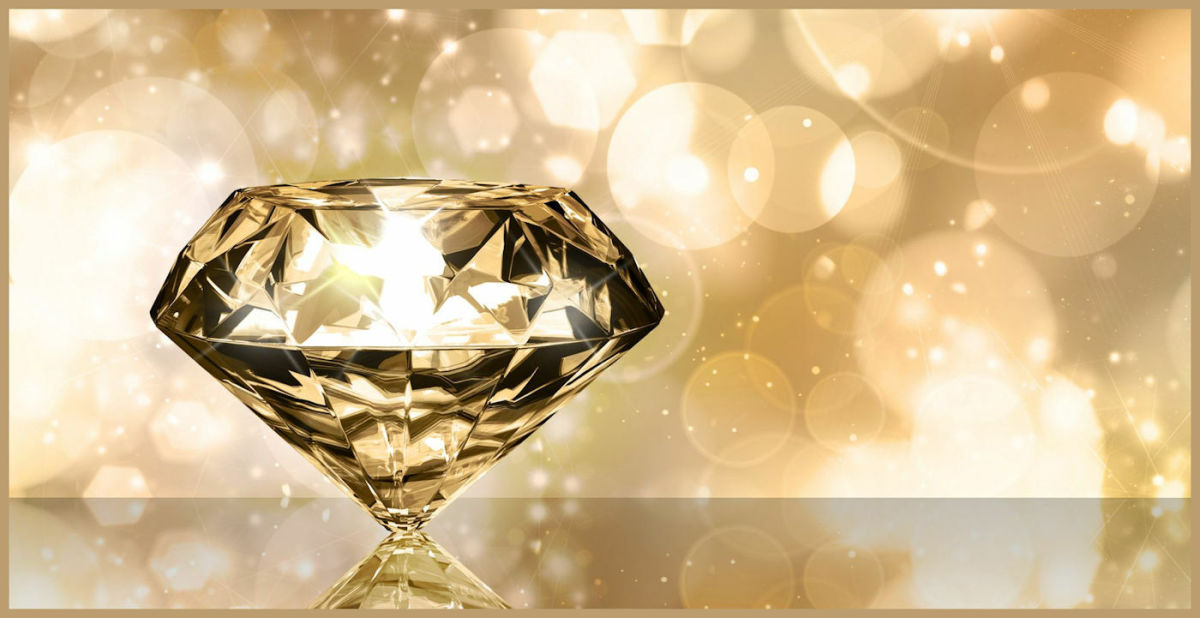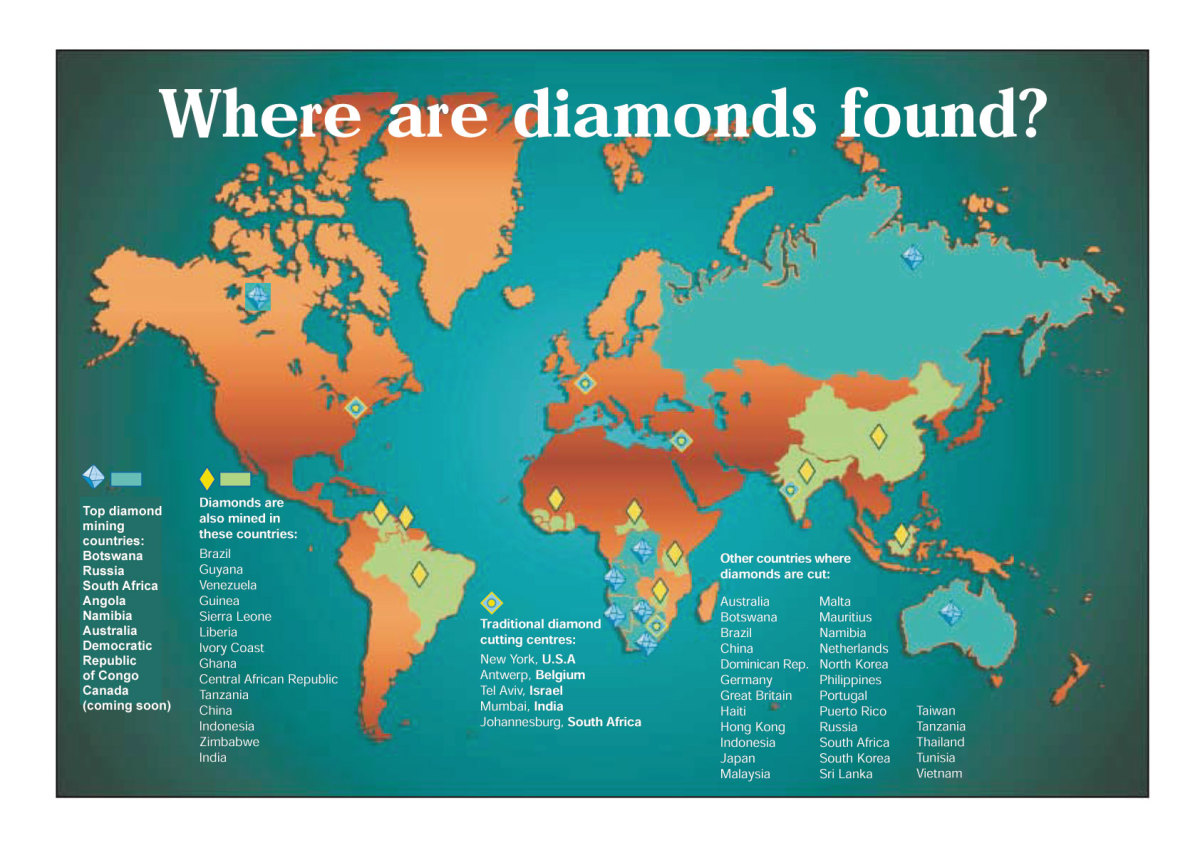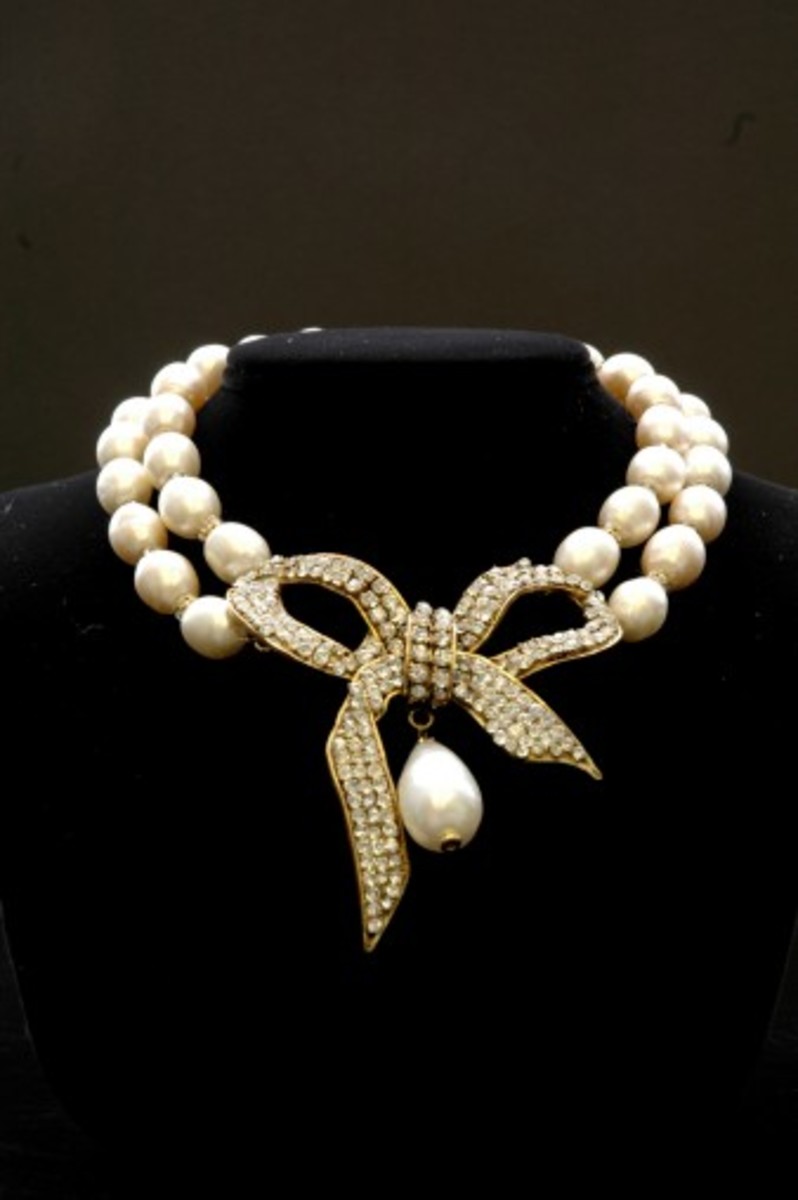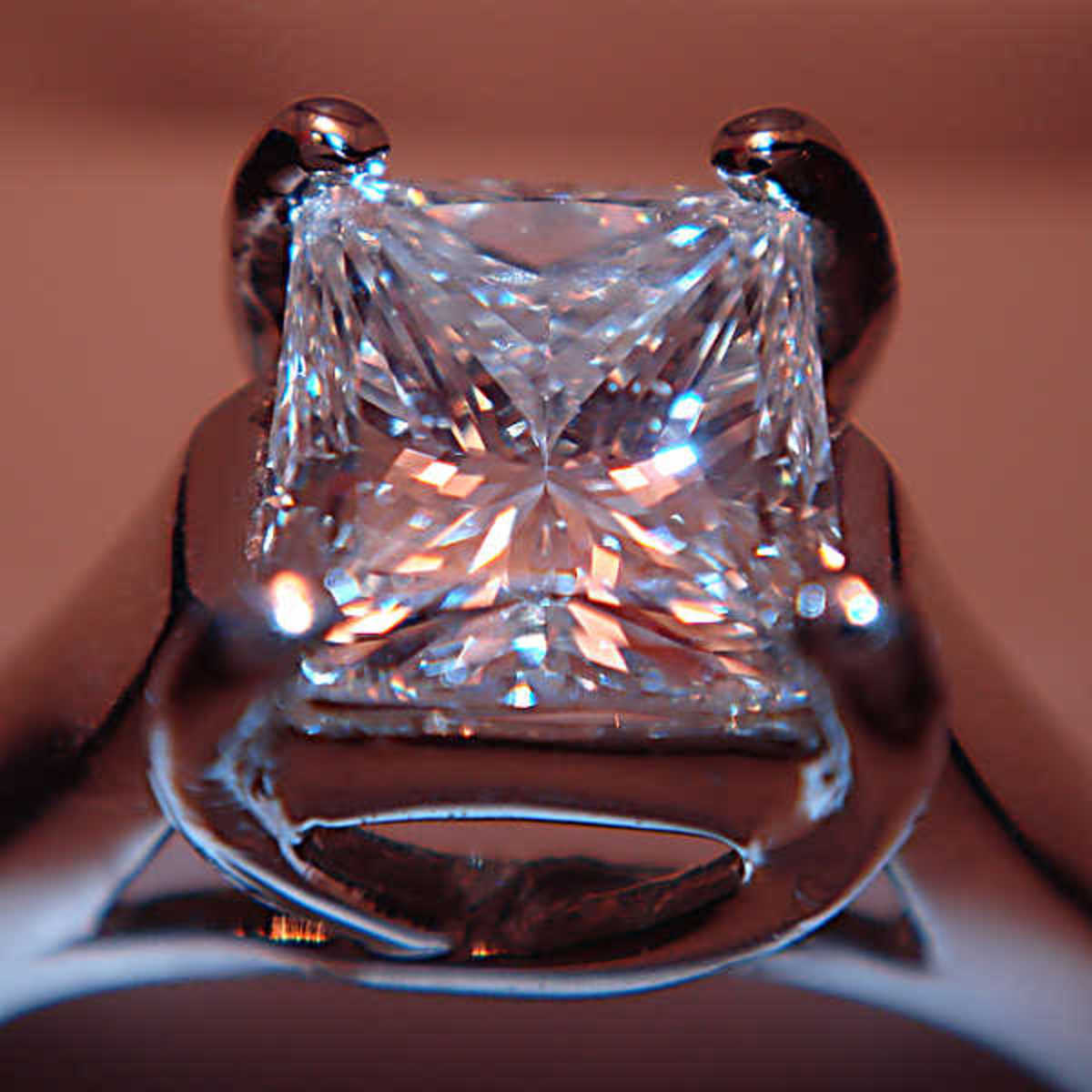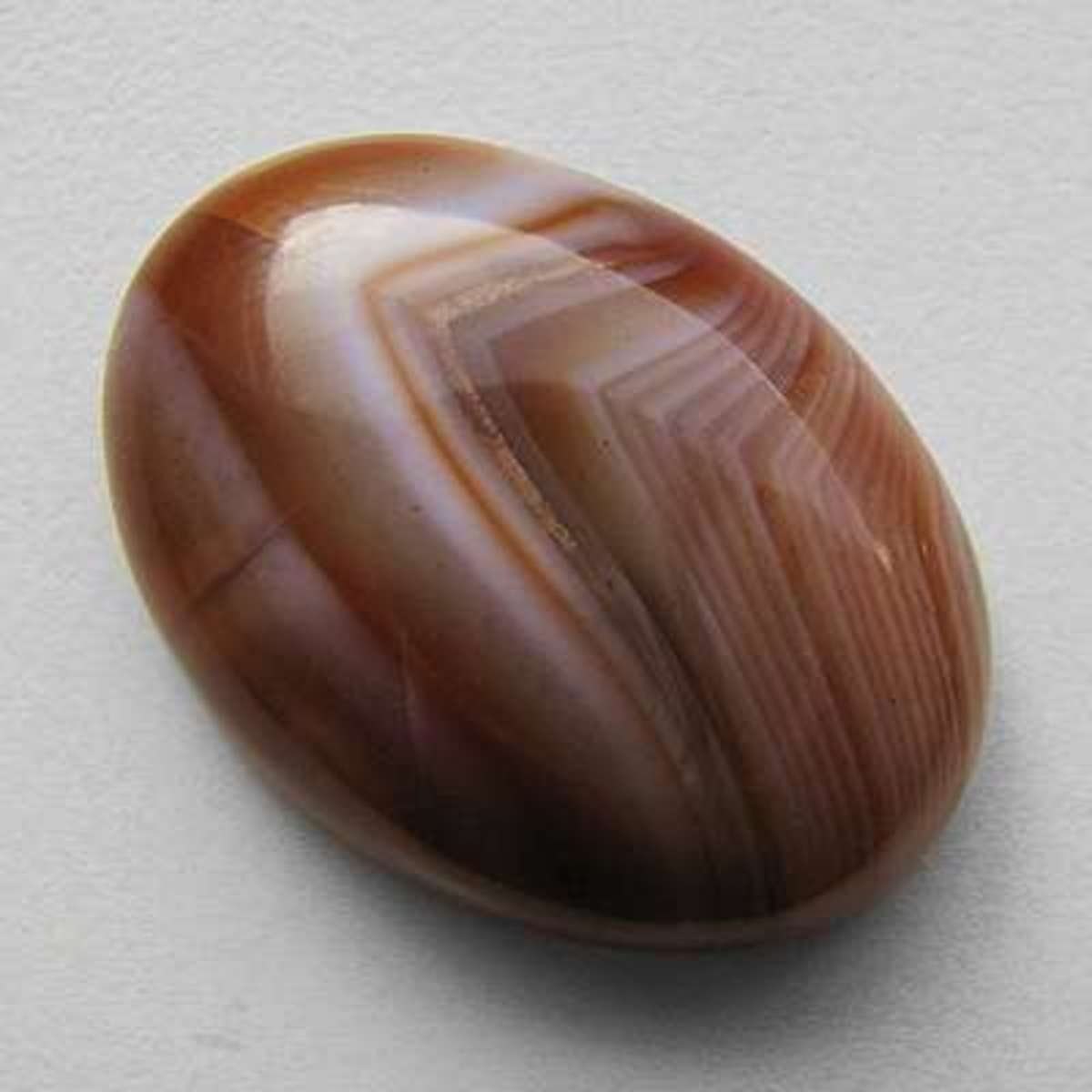Shopping For a Diamond
Reading the Code of a Diamond Grading Report
Before you purchase your diamond you need to get a certificate or a diamond grading report. When you get the report it is very important to know what the certificate or report is telling you. The report is written with code, almost like binary code—if you don’t know what the codes mean it may as well be a bunch of 1’s and 0’s. In my previous article before you purchase a diamond I discussed in great detail what the codes for clarity means. I also discussed how to judge carats and how important the cut of a diamond is. In the report color portion you will have codes like D, E, and F. You may get a code anywhere from D – L, or P – X, and/or Z. D – F signifies the diamond as having no color. J – L indicates the diamond has a light yellow color, P – X represents a dark yellow while Z means the diamond is a different color. When you read the report you will want to see a D as that is the most valuable, an X is not as valuable, and a Z represents a rare and expensive diamond. Now that you know how to read a diamond grading report you are ready to shop for your diamond.
Bonded Diamond Websites
- Fully Bonded Diamonds
This is the best website to learn more about fully bonded diamonds on the web. - Diamonds & Diamond Jewelry : Baltimore, Owings Mills, Maryland, MD
Diamonds & diamond jewelry at Bonded Diamonds, Baltimore, Owings Mills, Maryland, MD. - Diamonds & Diamond Jewelry : Baltimore, Owings Mills, Maryland, MD
Diamonds & diamond jewelry at Bonded Diamonds, Baltimore, Owings Mills, Maryland, MD.

Bonded Diamonds or Non-Bonded Diamonds
First it is most important to understand what the difference between bonded diamonds and non-bonded diamonds are. A bonded jeweler sells bonded diamonds but there are very few of them in the world. Bonded jewelers account for about 5 percent of the known jewelers in the world so finding a bonded diamond will be very challenging. Is it worth the challenge? I believe so because, although more expensive to buy, bonded diamonds are guaranteed for life. Since diamonds are forever, they are guaranteed forever. With a bonded diamond, no matter how long you have owned the diamond you can resell it to a bonded jeweler for one hundred percent of the value. Bonded diamonds are protected from chips or breaks, and will be replaced if one ever happens. However, it is important to note that they will only do this once. Because of the threat of false diamonds and fake stones, you are guaranteed that you are buying a real diamond with a bonded jeweler. Another cool fact about diamonds is that their value increases as time progresses. When you buy a bonded diamond you are protected against a possible market crash. In the event of a crash, a bonded jeweler will refund you the difference of what it is worth and what you paid prior to the crash. So it is well worth the extra cost to buy a bonded diamond, as I have said…purchasing a diamond is about the third most important purchase you will make. Finding a bonded jeweler in your area can be very difficult, and if you do find one in your area definitely purchase a diamond from them. It is also important once you find a bonded jeweler to mention that you are only interested in the bonded diamonds. Finding your bonded jeweler can be done within the vastness of the internet. Or you can burn ten days talking to local jewelers and deciphering their stories to find the truth.
Diamond Certificates
If you’ve read my first article and the top of this article then you should be ready and able to read the diamond grading report. The Diamond Certificate (diamond grading report) is completed by the Gemological Institute of America (GIA). The report is only so you can verify the diamonds cut, clarity, color, and carat, and you should demand this report when you are purchasing a diamond. You and I both know that salesmen (women too) will tell you anything you want to hear to get you to buy their fares. With the report in your hand you can verify everything they’ll tell you. What if you have to buy the certificate? The cost of a certificate is low and the benefits of having one are high. The diamond certificate will protect you from buying a high cost/low value stone, especially now that you know how to read the certificate. Plus, if you want to sell a high quality diamond you have to have the certificate. Have you ever been offered 30 bucks for a diamond at a pawn shop? Not with a certificate in your hand you won’t. The certificate gives you the power of knowing the exact value of the diamond and will prevent you from over paying. When you buy a diamond with a certificate, you should send a copy to your insurance when you insure the diamond. That will be covered in more depth in another article though. Jewelers who are reluctant, tell you a certificate diamond costs more, or won’t provide you with a certificate should be left, and you should go to a different jeweler, preferably a bonded jeweler. Also be aware of certificates from any source other than the Gemological Institute of America. GIA is the most reputable and trustworthy source of a diamond grading report. Don’t buy from jewelers that won’t use GIA certificates. Never buy an expensive diamond without a certificate, or if a dealer wants to use a different certificate source. If this happens you can bet the price of the diamond has been greatly inflated or there is something wrong with the stone.
Pricing
Pricing a diamond is a lot different than pricing a tube of toothpaste. First, a diamond is priced by adding up the cost of the rough diamond, the cost to cut, and the other costs necessary to turn the rough diamond into something marketable and beautiful. A diamond goes to many different places before it ends up in Zale’s or Kay Jewelers. It goes from the mine, to the cutter, to the grader, and then the primary market. At the primary market the diamond is then purchased by wholesalers who in turn sell the diamond to retailers. Buying a diamond early on will decrease the cost of the diamond, but its value will not be decreased at all. The value is set to what the diamond can be sold for on the market. To ensure you are getting a fair price for your diamond or that you are paying a fair price I cannot stress enough how important a diamond grading report is.
Diamond Brands and What They Mean
Diamonds are gems and can’t be branded. Sure a jeweler may say that a particular cut of diamond or a particular color is specific to a certain “high dollar” brand. If you went to a jeweler like DeBeers, it is a DeBeers diamond because they own it, but it is still a diamond. So in essence a diamond brand means nothing at all. So when you go to buy a diamond, do not let a jeweler sell you a high priced diamond because it is a certain brand. They are trying to take your money for a name like DeBeers. If I was selling rocks that would normally be worth ten cents, and I told you, this rock is worth 20 cents because it is a Wes rock, would you buy it? I surely hope not.
Choosing the Cut of a Diamond
When you are shopping for a diamond of any nature, you will come across specific cuts. There are numerous types of cuts to choose from and refer to the shape of the diamond. The cut is relative to how well the diamond shines and sparkles. Some of the most popular cuts to choose from are princess, oval, heart, pear, and marquise. Again, the way the diamond is cut is far more important than the shape it is cut into. In the diamond industry though, the cut can mean a lot of things like depth and durability. You, the consumer, should look for the cut based off of looks. When you find one that you like, look at several other diamonds of the same cut to find the one that sparkles and shines the most in all lighting.
How to Buy Diamond Engagement Rings
I can say with confidence that if you are purchasing a diamond it is most often going to be an engagement ring. This tradition started long ago when a diamond ring was presented with an offer of marriage. Nowadays it is common place and when a man proposes to a woman she expects a diamond engagement ring to go with the proposal. It is a time honored and fitting tradition but when a man goes to buy an engagement ring he usually goes in blind. The first thing you need to figure out is how much you can afford. The standard assessment of engagement ring affordability is two months salary. I know, it’s a lot but your fiancée is worth it. As I have stated before, buying a diamond is about the third most important purchase you will ever make. If you don’t have two months salary saved up and want to get engaged soon, you may consider financing. You could take out a personal or secured loan at your bank to do this and end up paying less or you could attempt to get financing at your jeweler. It is also imperative that you find out how your credit is and what kind of down payment you may need. It is recommended that you have someone look at the ring before you actually purchase it, like your mom or sister, or even her friend take her shopping and inconspicuously have her pick out the ring. Then have them report back to you so you can secure the ring. Make sure that the jeweler has an exchange policy so if she doesn’t like the ring she can return it. If however, your girl decided she wants to pick out the ring herself and doesn’t like the one you picked out, it may be time to get a different girlfriend. I’m just kidding ladies.
Other Articles in this series:


